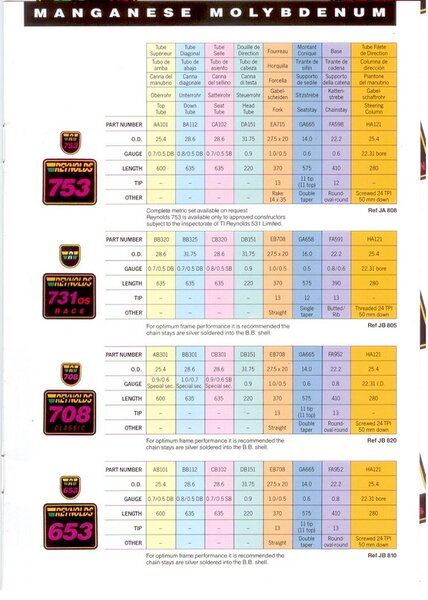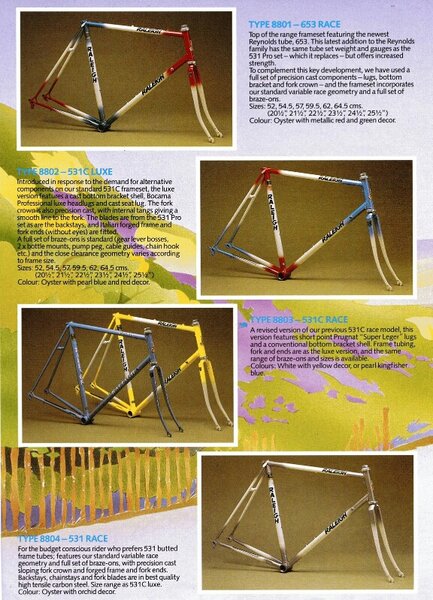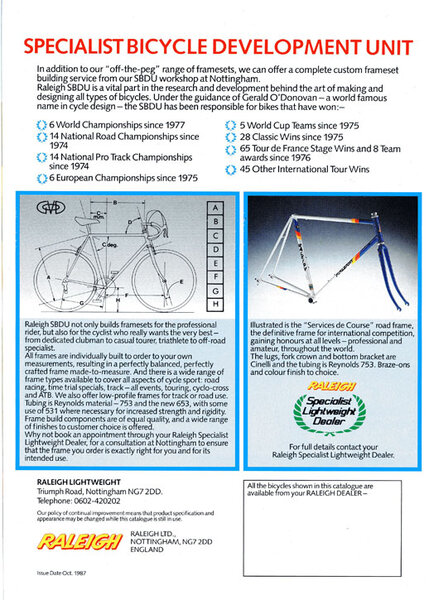653 came about after 1989 when Reynolds updated their range. Out went tube names like 753R/753T and 531Pro that were introduced in 1982 and in came just the one labelled version of 753 then 653, 731 and 708.
653 is a mixed tube, multi strength tube set so the tensile strength of each part of the frame is different - forks are approx 52T (tonne), main tubes 60T and stays 85T. The rear stays are 753, that is why stays on a 653 frame need to be silver soldered (and also recommended not to be chromed). Forks are simply plain old 531c. Main tubes are the same gauge as 753 but without the strength of the 753 tube (653 TT and ST 0.7/0.5 and DT 0.8/0.5).
Neil


